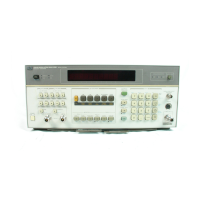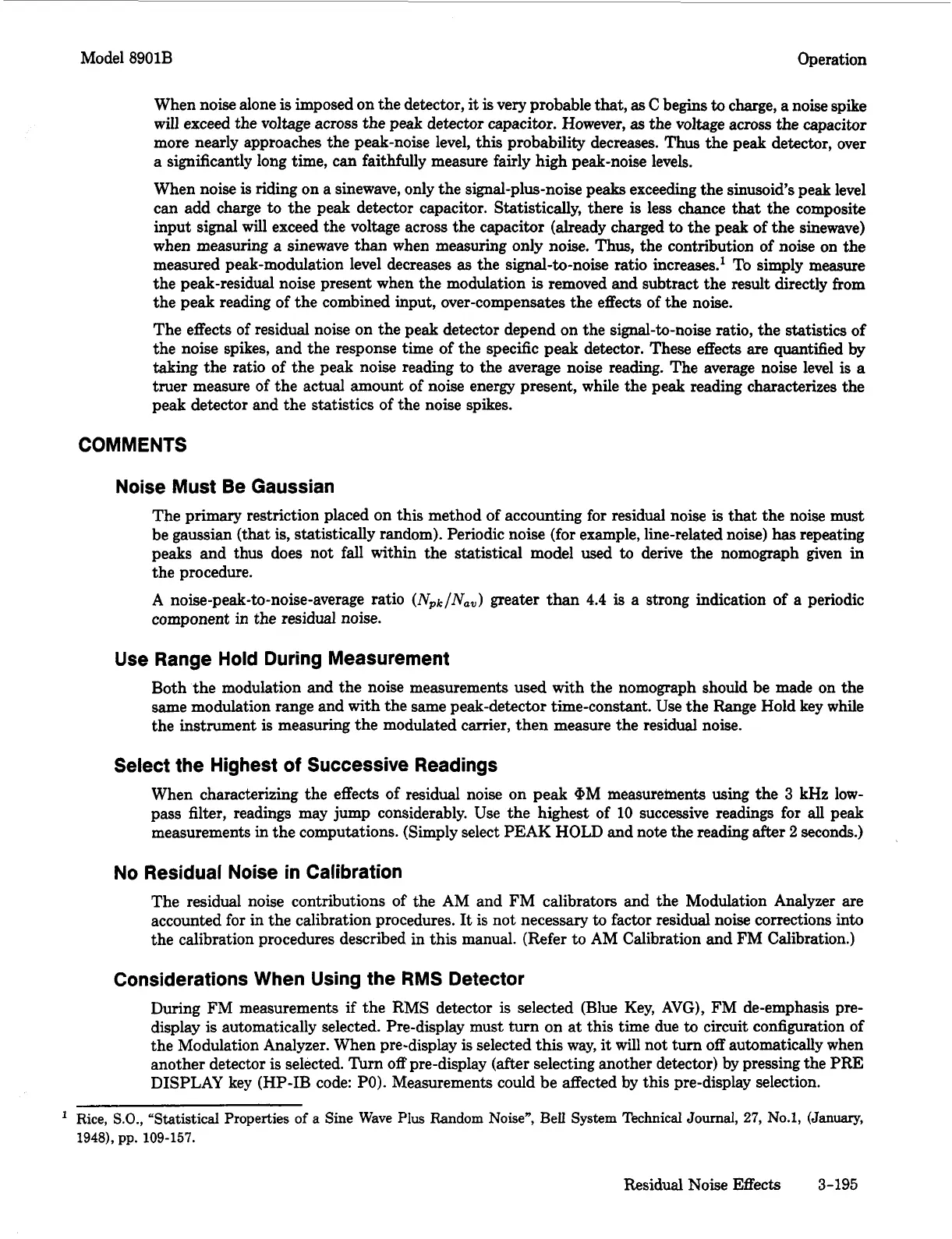Model 8901B Operation
When noise alone
is
imposed on the detector,
it
is
very probable that,
as
C begins
to
charge, a noise spike
will exceed the voltage across the peak detector capacitor. However,
as
the voltage across the capacitor
more nearly approaches the peak-noise level, this probability decreases. Thus the peak detector, over
a significantly long time, can faithfully measure fairly high peak-noise levels.
When noise is riding on a sinewave, only the signal-plus-noise peaks exceeding the sinusoid’s peak level
can add charge to the peak detector capacitor. Statistically, there
is
less chance
that
the composite
input signal will exceed the voltage across the capacitor (already charged
to
the peak of the sinewave)
when measuring
a
sinewave than when measuring only noise. Thus, the contribution of noise
on
the
measured peak-modulation level decreases
as
the signal-to-noise ratio increases.’ To simply measure
the peak-residual noise present when the modulation
is
removed and subtract the result directly
from
the peak reading of the combined input, over-compensates the effects of the noise.
The effects of residual noise on the peak detector depend on the signal-to-noise ratio, the statistics
of
the noise spikes, and the response time of the specific peak detector. These effects are quantified by
taking the ratio of the peak noise reading
to
the average noise reading. The average noise level
is
a
truer measure of the actual amount of noise energy present, while the peak reading characterizes the
peak detector and the statistics of the noise spikes.
COMMENTS
Noise Must Be Gaussian
The primary restriction placed on this method of accounting for residual noise
is
that the noise must
be gaussian
(that
is, statistically random). Periodic noise (for example, line-related noise)
has
repeating
peaks and thus does not fall within the statistical model used
to
derive the nomograph given
in
the procedure.
A
noise-peak-to-noise-average
ratio
(Npk/Nav)
greater than
4.4
is
a strong indication of a periodic
component in the residual noise.
Use Range Hold During Measurement
Both the modulation and the noise measurements used with the nomograph should be made on the
same modulation range and with the same peak-detector time-constant. Use the Range Hold key while
the instrument
is
measuring the modulated carrier, then measure the residual noise.
Select the Highest
of
Successive Readings
When characterizing the effects of residual noise on peak @M measurebents using the
3
kHz low-
pass filter, readings may jump considerably. Use the highest of 10 successive readings for
all
peak
measurements in the computations. (Simply select PEAK
HOLD
and note the reading
after
2
seconds.)
No Residual Noise
in
Calibration
The residual noise contributions
of
the AM and FM calibrators and the Modulation Analyzer are
accounted for in the calibration procedures. It is not necessary
to
factor residual noise corrections into
the calibration procedures described in this manual. (Refer to AM Calibration and FM Calibration.)
Considerations When Using the RMS Detector
During FM measurements
if
the RMS detector
is
selected (Blue Key, AVG), FM de-emphasis pre-
display is automatically selected. Pre-display must turn on at this time due
to
circuit configuration of
the Modulation Analyzer. When pre-display is selected this way,
it
will not turn off automatically when
another detector is selected.
Turn
off
pre-display (after selecting another detector) by pressing the PRE
DISPLAY key
(HP-IB
code:
PO).
Measurements could be affected by this pre-display selection.
Rice,
S.O.,
“Statistical Properties
of
a Sine Wave
Plus
Random
Noise”, Bell
System
Technical
Journal, 27,
No.1,
(January,
1948), pp. 109-157.
Residual Noise Effects 3-195

